Easy Vegan Rock Cakes: A Timeless British Bake for Any Occasion
Step into the delightful world of traditional British baking with these incredibly easy vegan rock cakes. These old-fashioned rock buns, often celebrated for their charmingly rustic appearance, are surprisingly simple to whip up using basic pantry ingredients. Each bite promises a satisfying crisp exterior that gives way to a wonderfully soft, moist, and crumbly middle. Whether you’re seeking a comforting snack, a delightful addition to elevenses, or the perfect accompaniment to an afternoon tea spread, these plant-based treats are an absolute must-try. Enjoy them plain, or elevate the experience with a generous slather of vegan butter or your favorite fruit jam.

Vegan rock cakes offer a truly delightful baking experience, renowned for their straightforward preparation and irresistibly delicious results. Far from being a complicated confection, they boast a light, moist, and gently crumbly texture that makes them incredibly moreish. This recipe is an ideal project for bakers of all skill levels, including those looking to involve children in the kitchen, as their beauty lies precisely in their unrefined, “rocky” aesthetic.
These humble yet charming treats prove that plant-based baking can be just as satisfying and authentic as their traditional counterparts. They are not only quick to prepare, requiring minimal fuss and simple techniques, but also incredibly versatile. Perfect for meal prepping ahead of a busy week or for an impromptu baking session, they bring a touch of British charm to any table.
What Are Rock Cakes, Exactly? A Glimpse into British Baking History
Rock cakes, affectionately known as rock buns, are a beloved staple in British baking. Their enduring popularity surged during the challenging times of the Second World War. During this era of rationing, these modest cakes became a household favorite because they were exceptionally economical to make and required fewer rationed ingredients like eggs and sugar compared to more elaborate cake recipes. This made them an accessible and comforting treat for many families.
The distinctive name “rock cakes” originates from their wonderfully craggy, irregular, and rustic appearance – resembling small rocks or boulders. It’s crucial to understand that this name refers solely to their look, not their texture! In reality, a well-made rock cake is far from being hard; it’s actually a variation of a drop scone. They are crafted from a slightly wetter scone dough, designed to be spooned rather than rolled and cut. The ideal vegan rock cake should feature a beautifully crisp exterior, providing a delightful contrast to its soft, moist, and richly crumbly interior.
Traditionally, these delightful buns are generously studded with mixed dried fruit, most commonly raisins or currants. They are also frequently flavored with a hint of mixed spice, a quintessential British blend that imparts warmth and aromatic depth, though variations can also include a simple touch of cinnamon or vanilla.
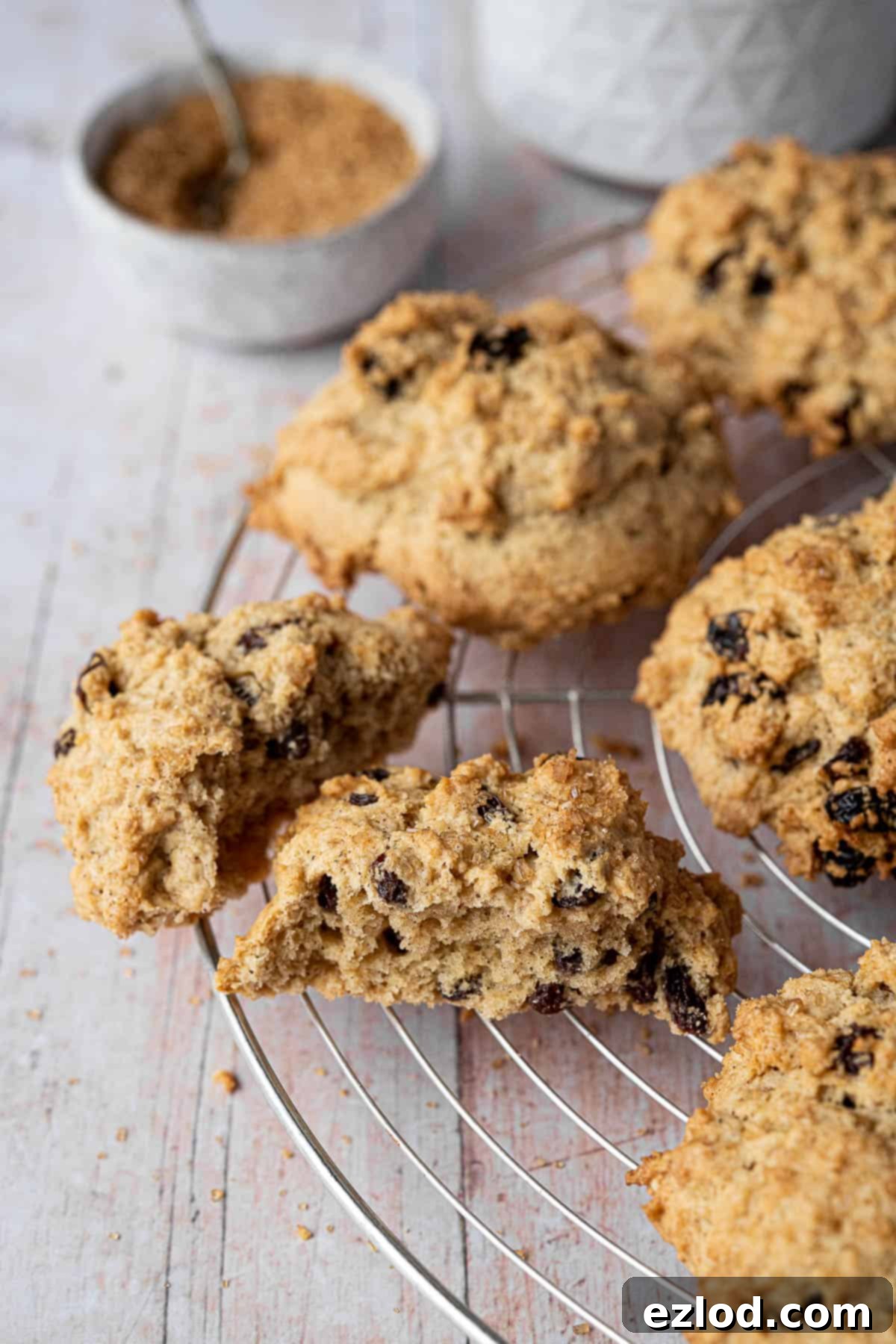
Essential Ingredients for Your Vegan Rock Cakes
Crafting the perfect batch of vegan rock cakes requires a few simple, yet key ingredients. Here’s a detailed look at what you’ll need and why each component is important for achieving that ideal texture and flavor:
- Self-Raising Flour and Baking Powder: This combination is crucial for giving the rock cakes their signature light and airy texture. Self-raising flour already contains a leavening agent, but an extra boost from baking powder ensures a tender crumb. While this recipe hasn’t been tested with gluten-free flour, a good quality gluten-free self-raising blend, specifically designed for baking, might work as an alternative, possibly with an additional ½ teaspoon of xanthan gum to aid structure.
- Mixed Spice: A staple in British baking, mixed spice is a fragrant blend typically including cinnamon, nutmeg, allspice, and cloves. It imparts a wonderfully warm and comforting aroma. If you can’t find mixed spice, you can easily substitute it with pumpkin spice, apple pie spice, or simply use ground cinnamon for a classic flavor. Alternatively, for a different twist, you could even omit the spice and add a teaspoon of vanilla extract instead.
- Sugar: For this recipe, I highly recommend using light brown soft sugar. Its slight molasses content adds an extra layer of depth to the flavor and contributes to the cakes’ moisture. However, if brown sugar isn’t available, caster sugar or granulated sugar can be used as direct substitutes. For an added delightful crunch and a beautiful caramelized top crust, a sprinkle of demarera (also known as turbinado) sugar over the rock cakes just before baking is highly recommended.
- Vegan Block Butter: The type of vegan butter you choose makes a significant difference. For the best, most consistent results, always opt for a block variety of vegan butter, such as Naturli Vegan Block or Flora Plant Butter. These are formulated to mimic traditional dairy butter in baking, having a lower water content compared to spreadable vegan margarines in tubs. Using block butter ensures a flakier, richer texture, akin to traditional scone or pastry making.
- Dried Fruit: Raisins are the traditional choice and work perfectly in this recipe, lending natural sweetness and chewiness. However, feel free to get creative! You can swap them for any dried fruit you prefer – currants, sultanas, chopped apricots, cranberries, or even a mix of several. If you’re feeling adventurous or catering to chocolate lovers, chocolate chips also make a fantastic addition, creating a different but equally delicious treat.
- Vegan Milk: Any unsweetened non-dairy milk will work effectively in this recipe, helping to bring the dough together (though avoid tinned coconut milk due to its higher fat content and distinct flavor). For optimal baking results, I personally prefer unsweetened soy milk. It has the highest protein content among most plant milks, which can contribute to a slightly better structure and browning in baked goods. Almond, oat, or rice milk are also suitable alternatives.
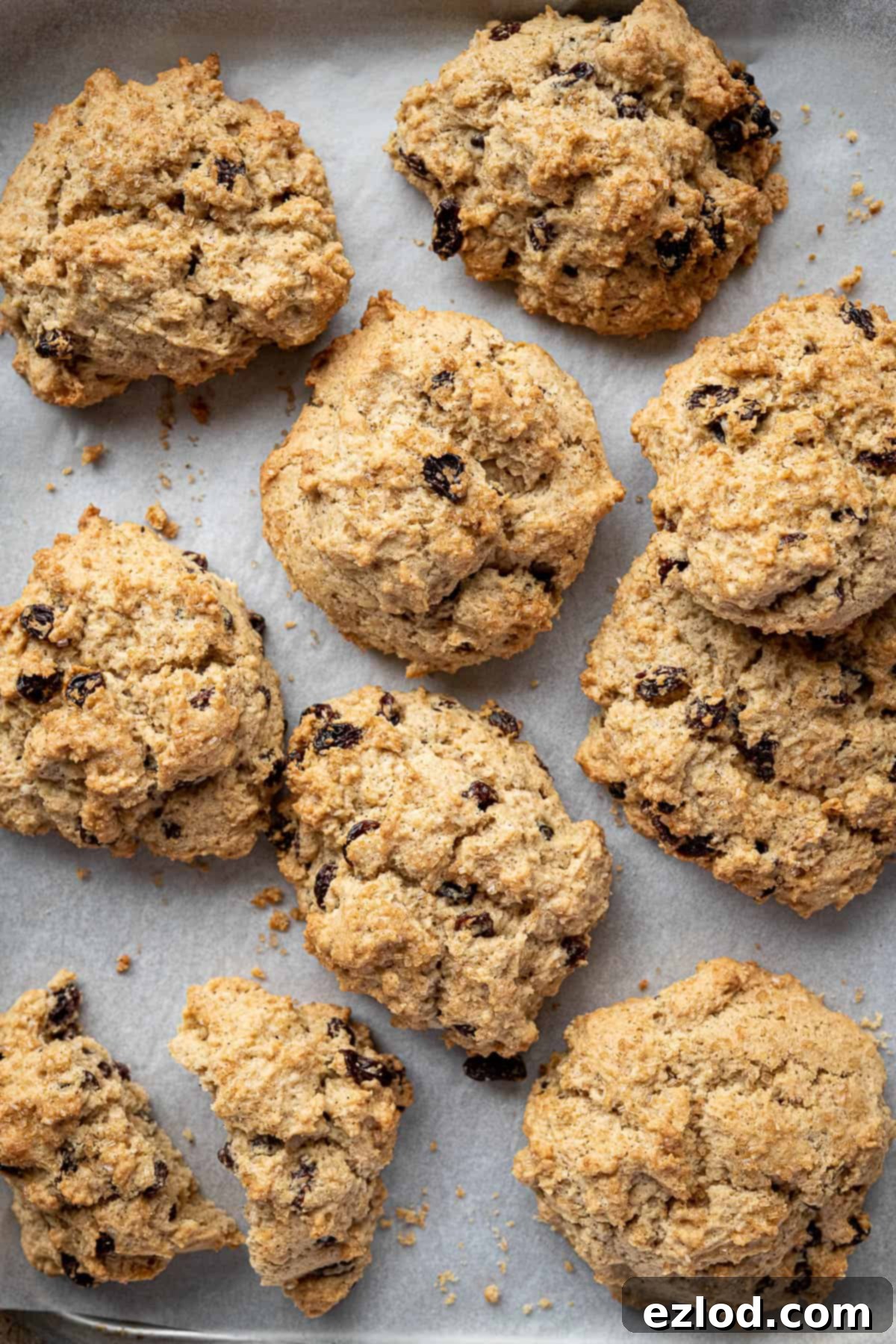
How to Bake Perfect Vegan Rock Cakes: A Step-by-Step Guide
(For precise measurements and detailed instructions, please refer to the comprehensive recipe card located at the very bottom of this page.)
Making vegan rock cakes is a straightforward process, ideal for even novice bakers. Here’s a detailed walkthrough to ensure your success:
Preparation is Key: Begin by preheating your oven to 180°C/160°C fan/350°F/gas mark 4. This ensures the oven is at the correct temperature when your dough is ready, promoting an even bake. Line a sturdy baking sheet with parchment paper to prevent sticking and ensure easy cleanup.
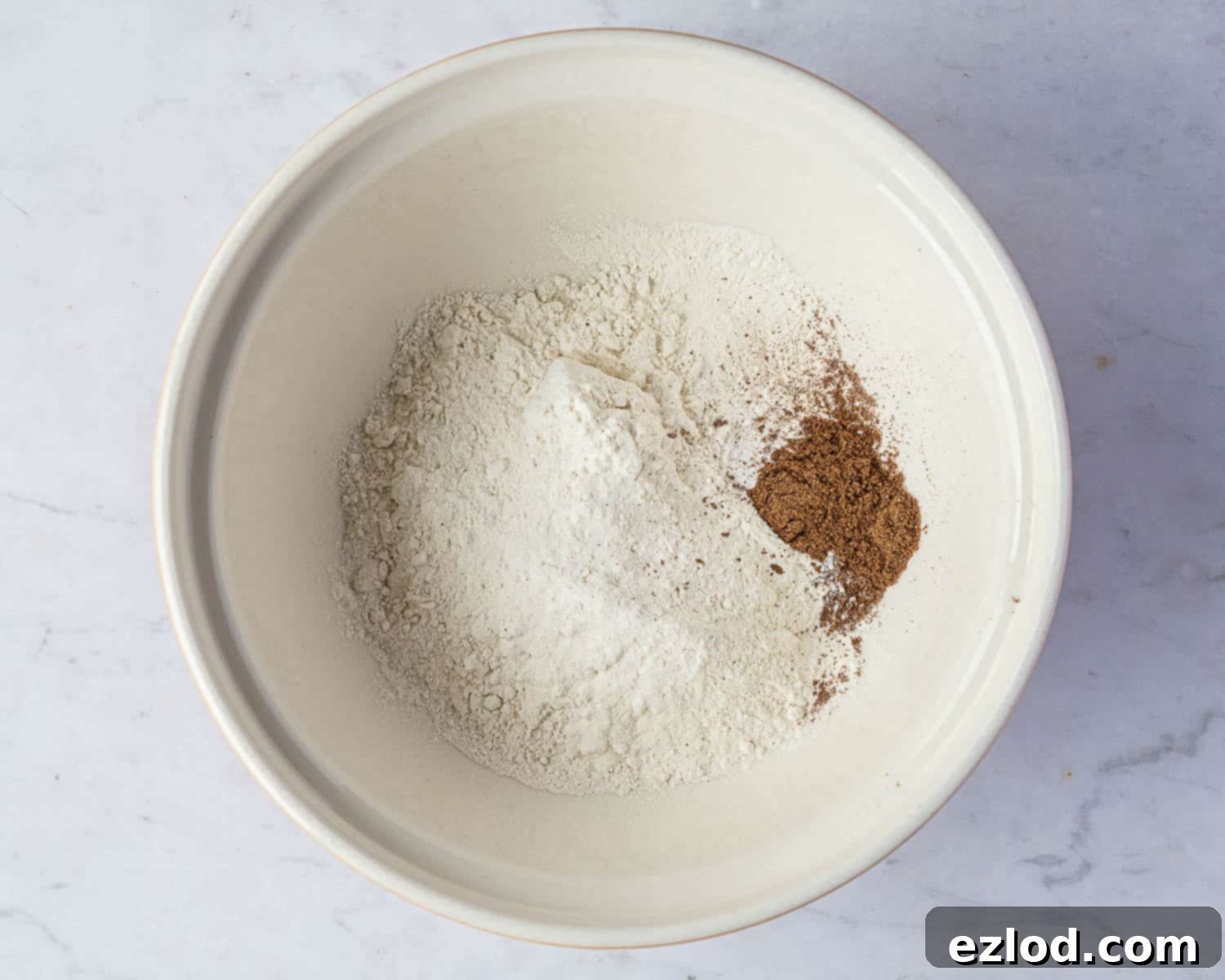
Combine Dry Ingredients: In a large mixing bowl, thoroughly whisk together the self-raising flour, baking powder, and mixed spice. Ensuring these dry components are well combined evenly distributes the leavening agents and flavor throughout the dough.
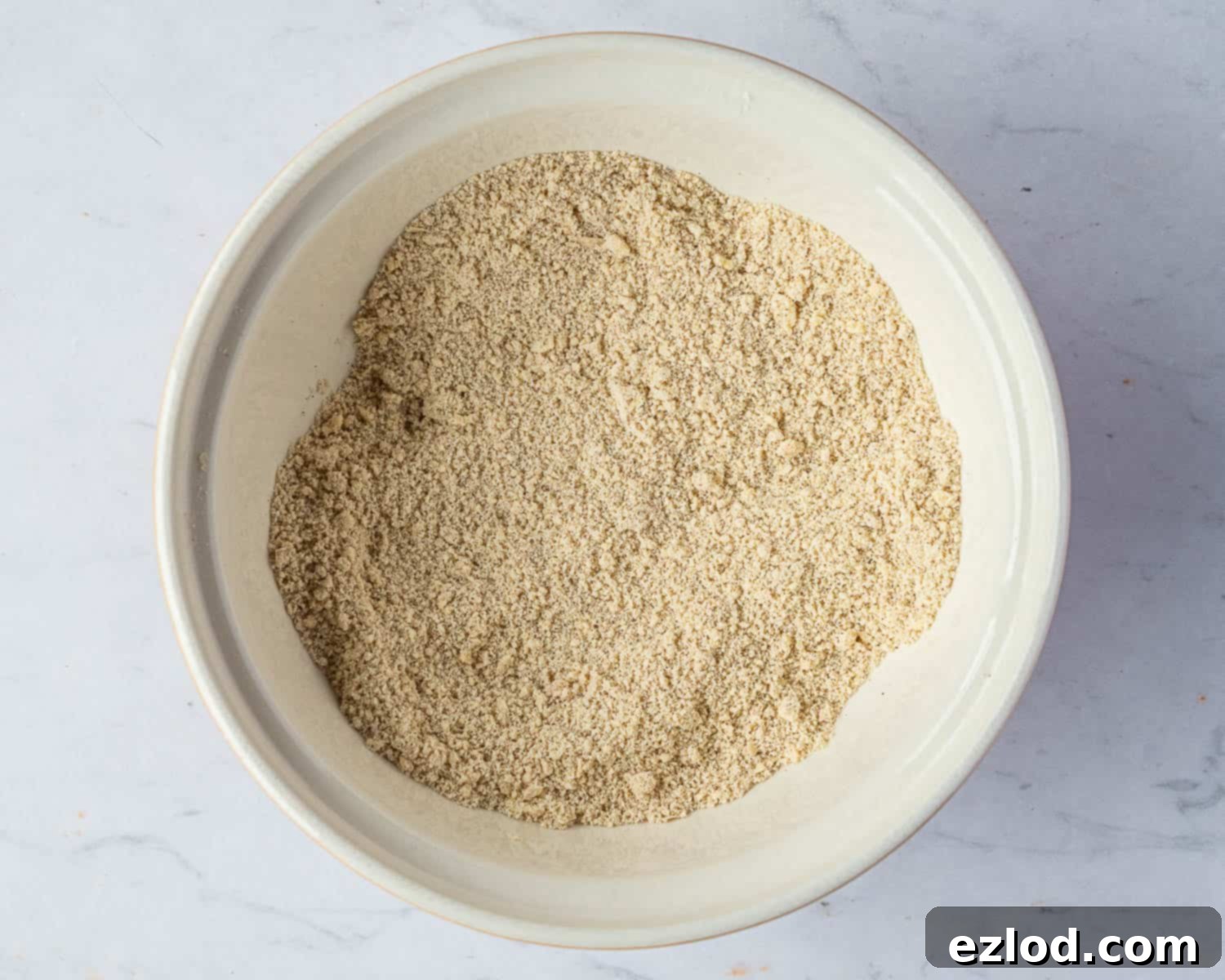
Incorporate the Vegan Butter: Add the cold, diced vegan block butter to the dry mixture. Using your fingertips, gently rub the butter into the flour until the mixture resembles fine breadcrumbs. This technique, similar to scone making, ensures the butter is evenly distributed but remains in small pieces, creating pockets of steam during baking for a light, crisp texture. Avoid overworking the mixture, as this can warm the butter too much and lead to tough cakes.
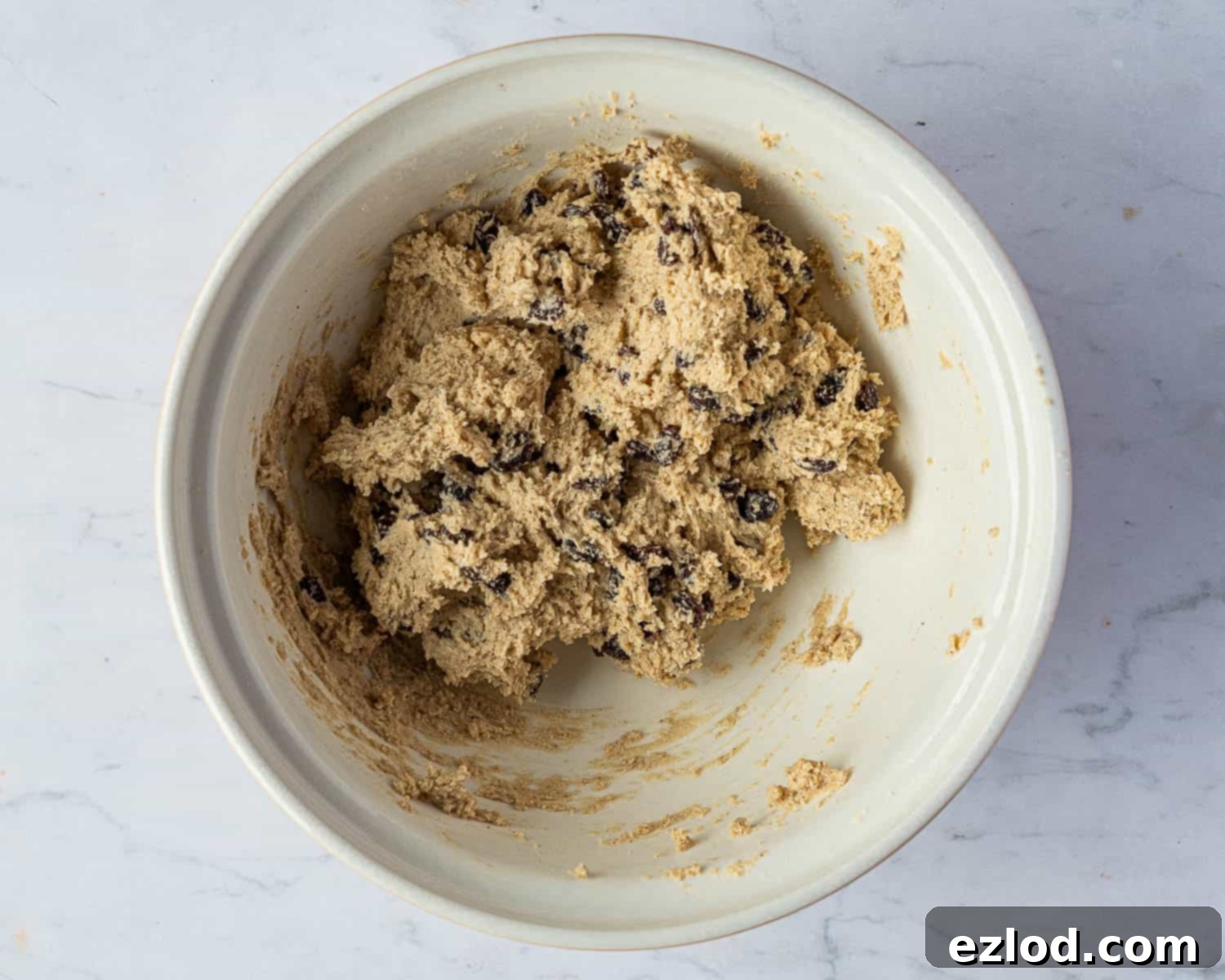
Form the Dough: Stir in your chosen dried fruit (or chocolate chips) and the light brown soft sugar. Then, gradually add the unsweetened non-dairy milk, mixing just until a firm but sticky dough forms. The key here is to mix minimally – over-mixing develops gluten, which can result in dense, chewy rock cakes rather than light, crumbly ones.
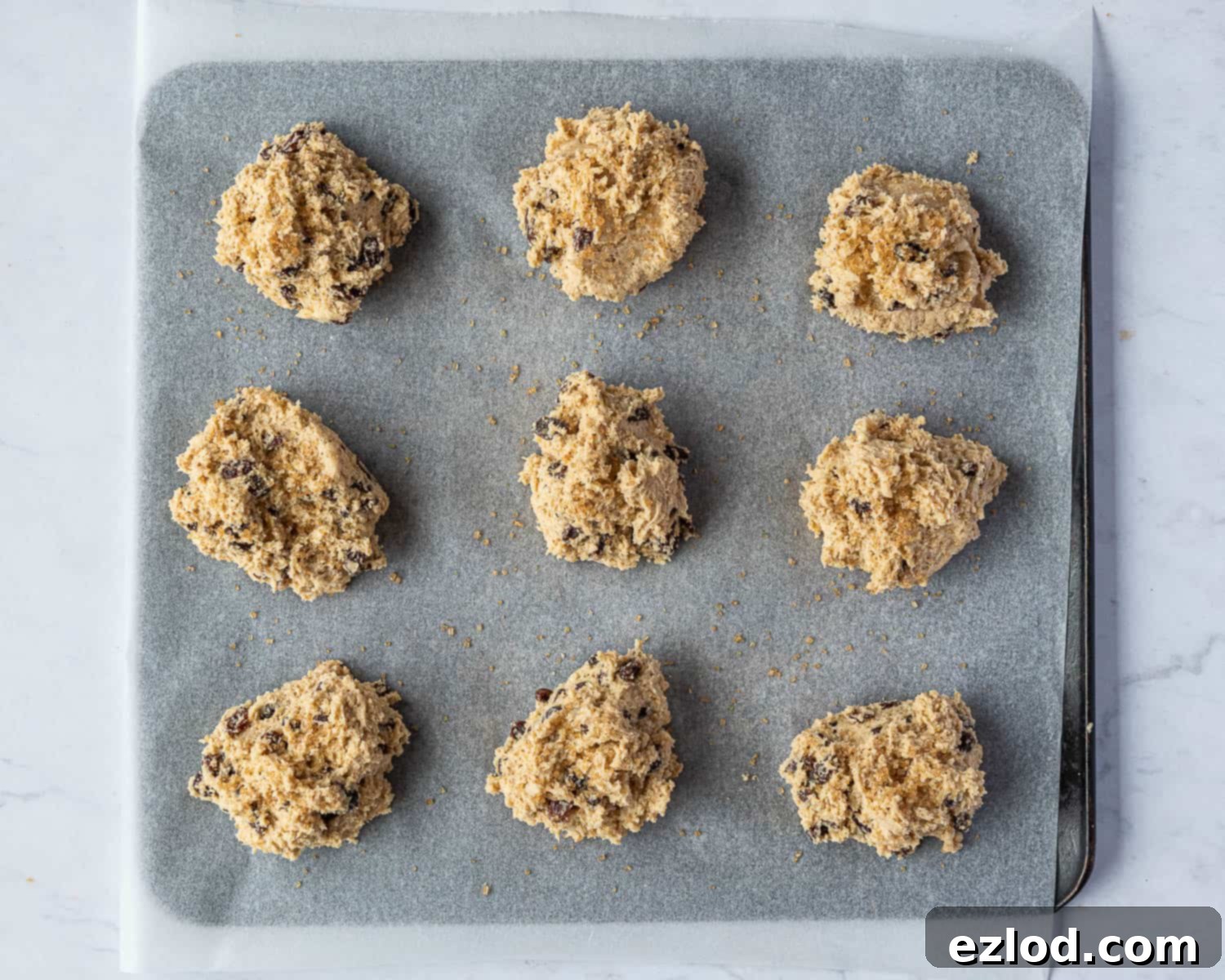
Shape and Prepare for Baking: Using a spoon, drop dollops of the dough onto your lined baking sheet, ensuring they are well-spaced to allow for expansion. Embrace the rustic charm – there’s absolutely no need for neatness! The more uneven and craggy the dollops look, the more authentic your rock cakes will be. This recipe typically yields about 9 perfectly sized rock cakes.
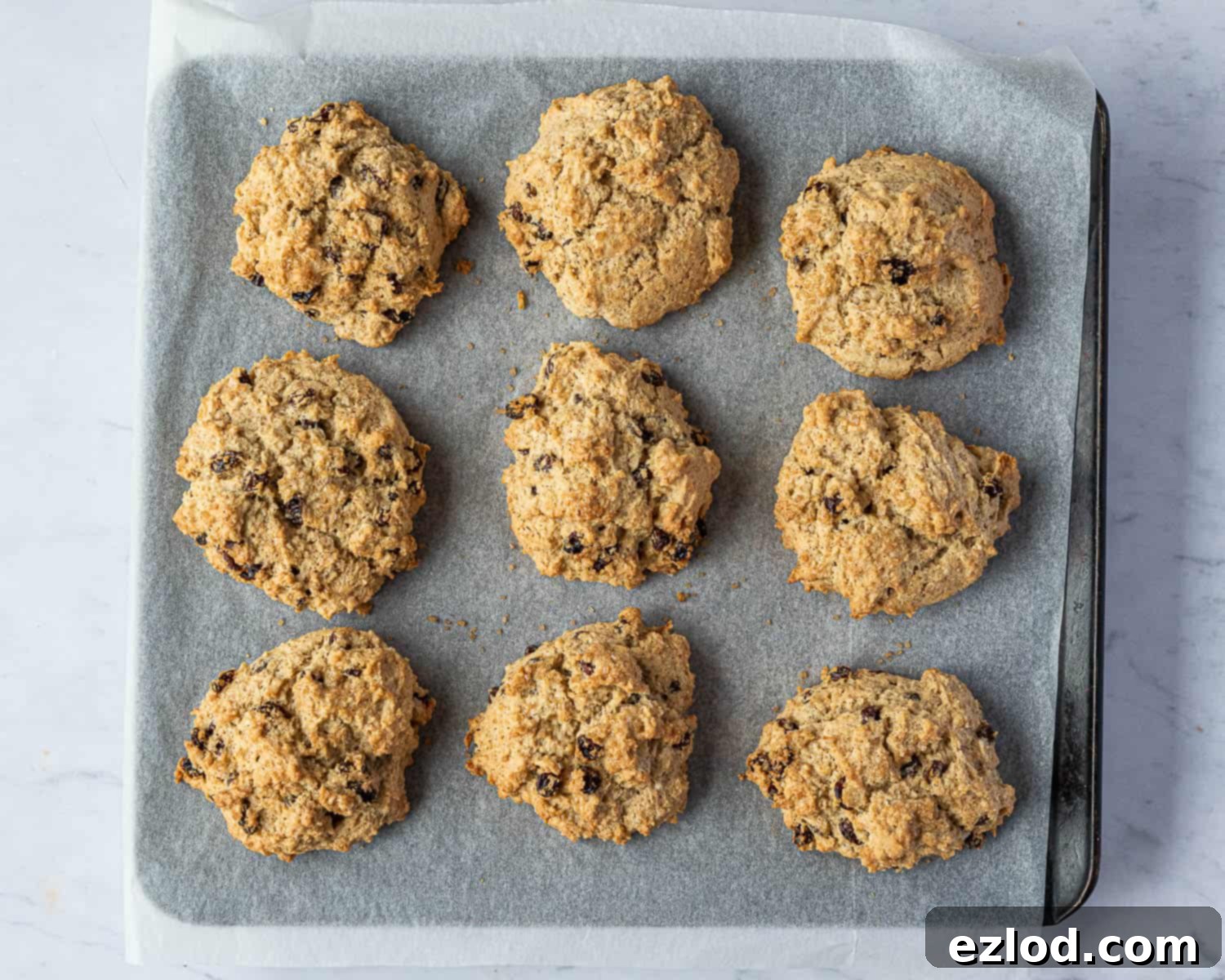
Bake to Golden Perfection: Sprinkle the tops of your shaped rock cakes with demarera sugar for that beautiful crunchy crust. Transfer the baking sheet to your preheated oven and bake for approximately 20 minutes, or until they turn a glorious golden brown. Keep an eye on them, as oven temperatures can vary.
Cool and Serve: Once baked, carefully transfer the hot rock cakes to a wire rack to cool slightly. While they are delicious warm, allowing them to cool a bit ensures they set properly. For the freshest taste and best texture, serve these delightful vegan rock cakes as soon as possible after they’ve cooled. They are best enjoyed on the day they are baked.

Top Tips for Vegan Rock Cake Perfection
- Precision with a Scale: While cup measurements are provided for convenience, all my baking recipes are developed using grams. For truly superior and consistent results in baking, I cannot stress enough the importance of using a digital kitchen scale. Measuring by weight is far more accurate than volumetric cup conversions, which can vary widely. Not only does it lead to better bakes, but it’s also often easier and less messy!
- Don’t Over-Work the Dough: This is a golden rule for any scone or biscuit-type dough. Mix the ingredients just until they are combined and form a cohesive dough. Over-mixing develops the gluten in the flour, which will result in tough, chewy rock cakes rather than the desired light and crumbly texture.
- Embrace the Rustic Look: Remember, rock cakes are named for their craggy, uneven appearance. There’s no need to try and make them perfectly round or smooth. The more rough and rustic they look, the more authentic and charming they will be. Simply spoon dollops onto the baking sheet.
- Customize Your Fruit: Raisins are traditional, but feel free to experiment with other dried fruits like sultanas, currants, chopped dried apricots, cranberries, or even a mixed fruit blend. For a decadent twist, swap the dried fruit for vegan chocolate chips!
- Spice it Up (or Down): The amount of mixed spice can be adjusted to your personal preference. If you don’t have mixed spice, pumpkin spice or apple pie spice are excellent substitutes. A simple dash of cinnamon also works wonderfully. For a spice-free option, a teaspoon of vanilla extract can be added to the milk for a different but equally delicious flavor profile.
- Freshness is Best: Rock cakes are at their absolute peak when eaten as fresh as possible. They are best enjoyed on the day they are baked, ideally shortly after they have cooled down from the oven. The crisp exterior is most pronounced when fresh.
Serving Suggestions for Your Vegan Rock Cakes
These versatile vegan rock cakes are perfect for a variety of occasions and can be enjoyed in many ways. While utterly delicious on their own, consider these serving ideas:
- Classic Afternoon Tea: Serve them warm with a dollop of vegan clotted cream (if you can find it!) or whipped vegan cream, alongside a generous spoonful of your favorite fruit jam (strawberry or raspberry are traditional).
- Breakfast or Brunch: A comforting addition to a leisurely morning, perhaps with a mug of tea or coffee.
- Simple Snack: Pack them in lunchboxes for a wholesome treat or enjoy them as a quick pick-me-up during the day.
- Dessert: Warm them slightly and serve with a scoop of vegan vanilla ice cream and a drizzle of fruit compote for a simple, satisfying dessert.
Can I Freeze Vegan Rock Cakes?
Yes, absolutely! Vegan rock cakes freeze remarkably well, making them an excellent candidate for meal prepping or having a stash of quick treats on hand. To best preserve their freshness and texture, freeze them on the same day they are baked, once they have completely cooled.
Simply place the cooled rock cakes in a freezer-safe bag or an airtight freezer-proof container, ensuring they are not squashed. They can be stored in the freezer for up to three months. When you’re ready to enjoy them, allow them to defrost at room temperature for a few hours. For optimal warmth and to revive some of that lovely crispness, refresh them in a low oven (around 150°C/300°F) for about 5-10 minutes before serving.
More Simple & Delicious British Vegan Recipes
If you’ve enjoyed these vegan rock cakes, you’ll be delighted to explore the vast array of vegan versions of classic British recipes available. My British category page is a treasure trove of plant-based interpretations of traditional favorites. Here’s a curated selection of some easy and popular options to get you started on your British vegan baking journey:
- Vegan Malt Loaf
- Vegan Eve’s Pudding
- Vegan Scones
- Vegan Jam and Coconut Sponge
- Vegan Earl Grey Tea Loaf
- Vegan Welsh Cakes
- Vegan Mincemeat Crumble Bars
- Vegan Marzipan Cherry Scones
- Vegan Shortbread Fingers
Frequently Asked Questions (FAQs)
Here are some common questions you might have about making vegan rock cakes:
- Can I make these gluten-free? While this specific recipe uses wheat-based self-raising flour, you could try substituting with a good quality gluten-free self-raising flour blend, often available in supermarkets. You might need to add about ½ teaspoon of xanthan gum to help with the dough’s structure, as gluten-free flours behave differently. Results may vary slightly in texture.
- What if I don’t have self-raising flour? You can make your own! For every 1 cup (125g) of plain (all-purpose) flour, whisk in 1 ½ teaspoons of baking powder and a pinch of salt. For this recipe, that would mean using 225g plain flour plus an additional 2 ½ teaspoons of baking powder (on top of the 1 teaspoon already specified).
- Can I use fresh fruit instead of dried? Fresh fruit contains too much moisture and will likely make the dough too wet and the cakes soggy. It’s best to stick with dried fruits for this recipe.
- How long do these keep? As mentioned, they are best eaten on the day they are baked for peak freshness. However, they will keep in an airtight container at room temperature for 2-3 days, though they may become a little softer.
- Can I make the dough ahead of time? It’s best to bake rock cakes immediately after mixing the dough. Letting the dough sit for too long can cause the leavening agents to lose their potency, resulting in less rise.
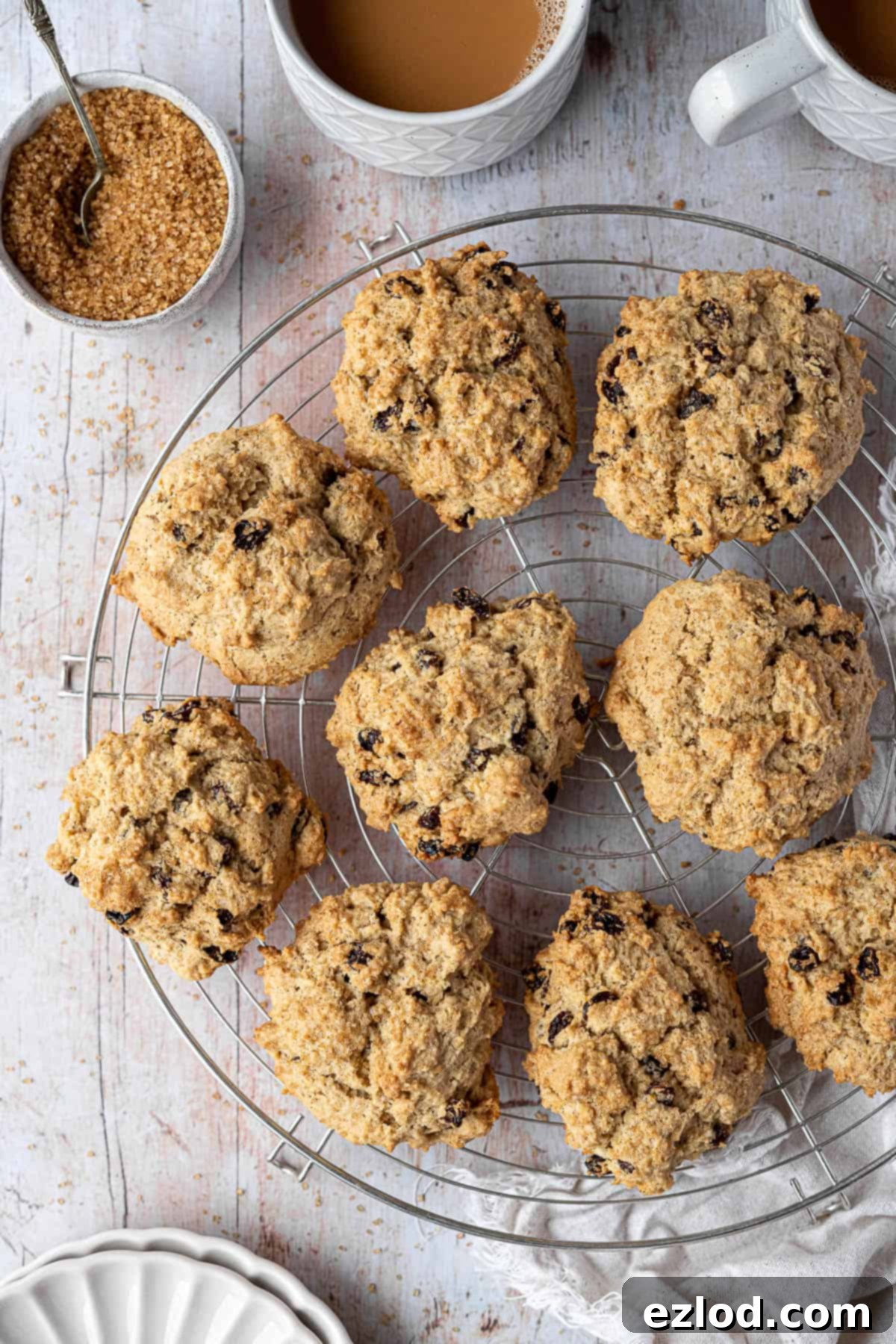
If you embark on this delicious journey and try out this recipe, I’d love to hear about your experience! Please take a moment to rate it, leave a comment below, or share your creations on Instagram by tagging @domestic_gothess and using the hashtag #domesticgothess. Your feedback and photos truly inspire!
All images and content published on Domestic Gothess are copyright protected. If you wish to share this recipe, please do so by utilizing the provided share buttons. To respect copyright, kindly refrain from screenshotting or posting the full recipe or content directly. Instead, please include a direct link back to this original post for the recipe.

Print
Vegan Rock Cakes
Ingredients
- 225 g (1 ¾ cups + 1 Tablespoon) self-raising flour
- 1 teaspoon baking powder
- 1 ½ teaspoons mixed spice
- 115 g (½ cup) vegan block butter cold and diced
- 75 g (¼ cup + 2 Tablespoons) light brown soft sugar
- 125 g (4 ½ oz) raisins or dried fruit of your choice
- 5 Tablespoons unsweetened non-dairy milk
- demerara (turbinado) sugar for sprinkling
Instructions
-
Preheat the oven to 180°C/160°C fan/350°F/gas mark 4. Line a baking sheet with baking parchment.
-
Mix together the flour, baking powder and mixed spice in a large bowl.
-
Add the cold, diced vegan butter and rub it in using your fingertips until the mixture resembles fine breadcrumbs and no lumps of butter remain.
-
Stir in the raisins (or other dried fruit/chocolate chips) and light brown soft sugar. Then, gradually add the unsweetened non-dairy milk and mix gently to form a firm but sticky and spoonable dough. Be careful not to overmix.
-
Using a spoon, drop dollops of the dough well spaced apart onto the lined baking sheet. You should get approximately 9 rock cakes. Remember, there’s no need to be neat; embrace the rough, craggy appearance!
-
Sprinkle the tops of the rock cakes generously with demerara sugar for a delicious crunchy crust. Bake for about 20 minutes, or until they are beautifully golden brown and firm to the touch.
-
Once baked, transfer the rock cakes to a wire rack to cool slightly. For the best flavor and texture, serve them as soon as possible, ideally on the day they are baked.
Notes
- Refer to the full blog post above for additional tips, detailed explanations, ingredient substitutions, serving suggestions, and step-by-step photos to guide you through the process.
- For all baking recipes, including this one, I strongly recommend using a digital kitchen scale for metric measurements (grams) over cup conversions. Measuring by weight ensures far greater accuracy and consistent results, which is crucial for successful baking. It’s also often a quicker and cleaner method!
- These rock cakes are best enjoyed fresh, ideally on the day they are baked. They can be stored in an airtight container for 2-3 days or frozen for up to 3 months.

